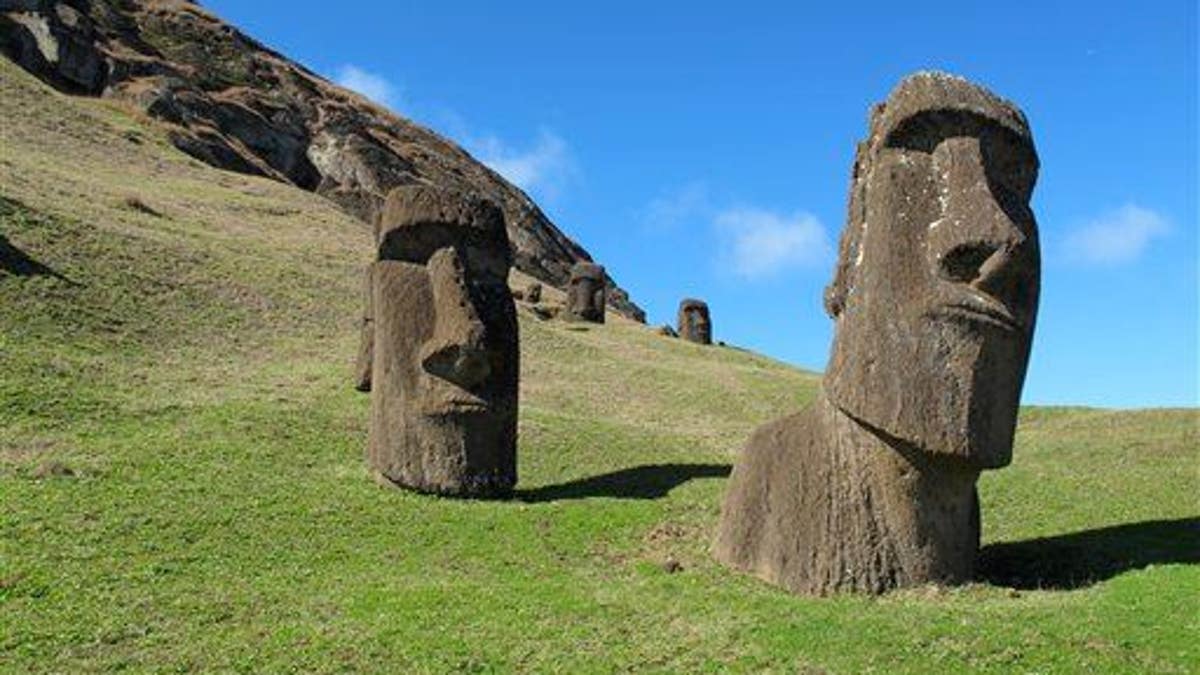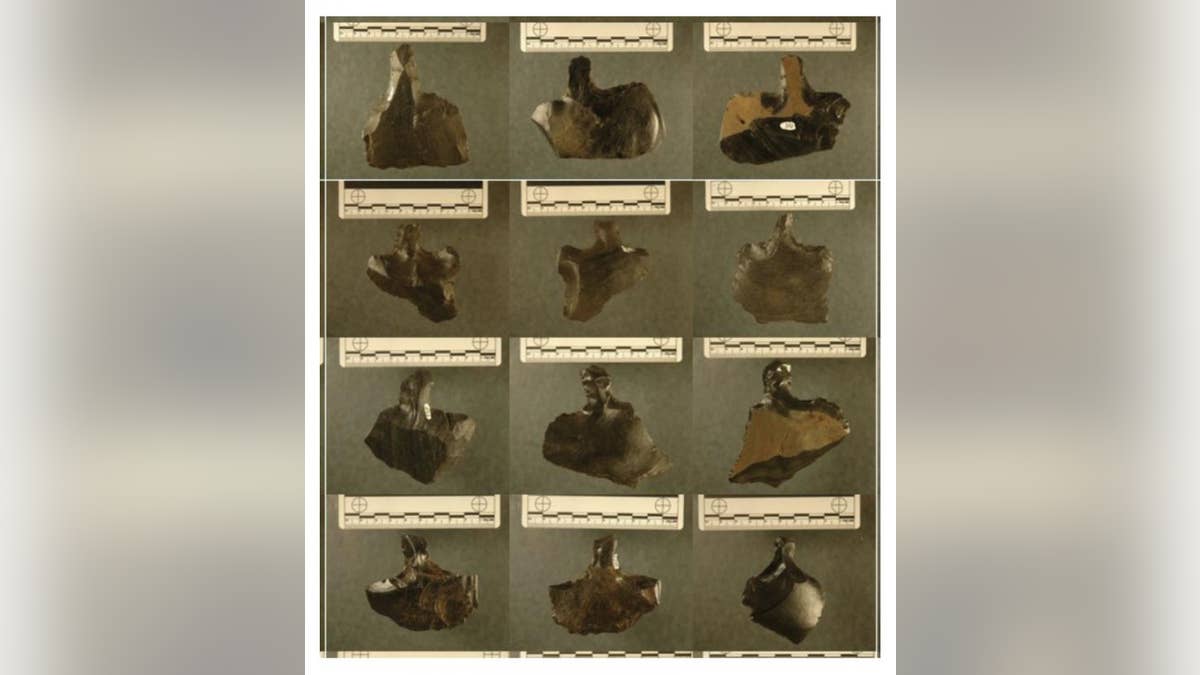
This August 2012 photo shows heads at Rano Raraku, the quarry on Easter Island. (AP Photo/Karen Schwartz)
New research conducted on artifacts from Easter Island is questioning the theory that the ancient civilization there was destroyed by warfare.
Experts from Binghamton University studied hundreds of ancient items found on the shores of Easter Island, which is also known as Rapa Nui. Previously, the artifacts were thought to be spear points, but analysis reveals that they were likely general purpose tools.
Carved from obsidian, or volcanic glass, thousands of the triangular objects, known as mata'a, litter the surface of the island.
Related: Amateur archaeologist discovers lost Spanish settlement in Florida Panhandle
‘We found that when you look at the shape of these things, they just don't look like weapons at all," explained Carl Lipo, professor of anthropology at Binghamton University and study lead, in a press release. "When you can compare them to European weapons or weapons found anywhere around the world when there are actually objects used for warfare, they're very systematic in their shape. They have to do their job really well. Not doing well is risking death."

(Images of various mata'a (Carl Lipo, Binghamton University).)
Lipo and his team analyzed "the shape variability" of a photo set of over 400 mata'a.
"You can always use something as a spear. Anything that you have can be a weapon,” said Lipo. “But under the conditions of warfare, weapons are going to have performance characteristics. And they're going to be very carefully fashioned for that purpose because it matters...You would cut somebody [with a mata'a], but they certainly wouldn't be lethal in any way."
Related: Ancient Roman brooch contains 'lovely' palindrome
Some scientists have estimated, that, at its height, Easter Island’s population may have been as high as 20,000, but fell over centuries after the island’s trees and palms were cut down to build canoes and transport its famous giant statues. One theory suggests that the deforestation led to soil erosion, impacting the island’s ability to support wildlife and farming, and the collapse of its civilization.
When the Dutch arrived at the island in 1722, its population was 3,000 or less. Only 111 inhabitants were living on Easter Island by 1877.
Other experts, however, have questioned whether Easter Island ever supported a large population, citing instead the arrival of Europeans, who brought diseases and took islanders away as slaves.
Related: Ancient 4,500-year-old boat discovered in Egypt
"What people traditionally think about the island is being this island of catastrophe and collapse just isn't true in a pre-historic sense,” said Lipo. “Populations were successful and lived sustainably on the island up until European contact.”
The Binghamton University study was published in the journal Antiquity.




















